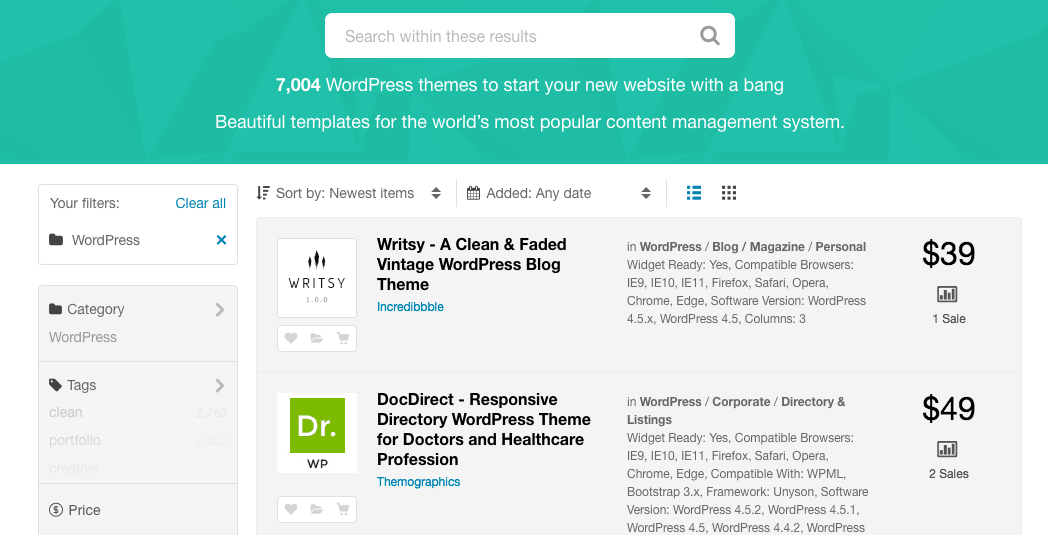
20 Mar The Comprehensive Guide To Selecting the Best WordPress Theme
The hunt for the best WordPress theme isn’t that easy to complete. One requires tons of experience with a variety of themes, with different versions of WordPress itself, and with the variety of plugins available out there.
This experience is not that easy to cultivate as it requires time and efforts. Also, you need to try and check a lot of themes from different developers, especially the popular ones.
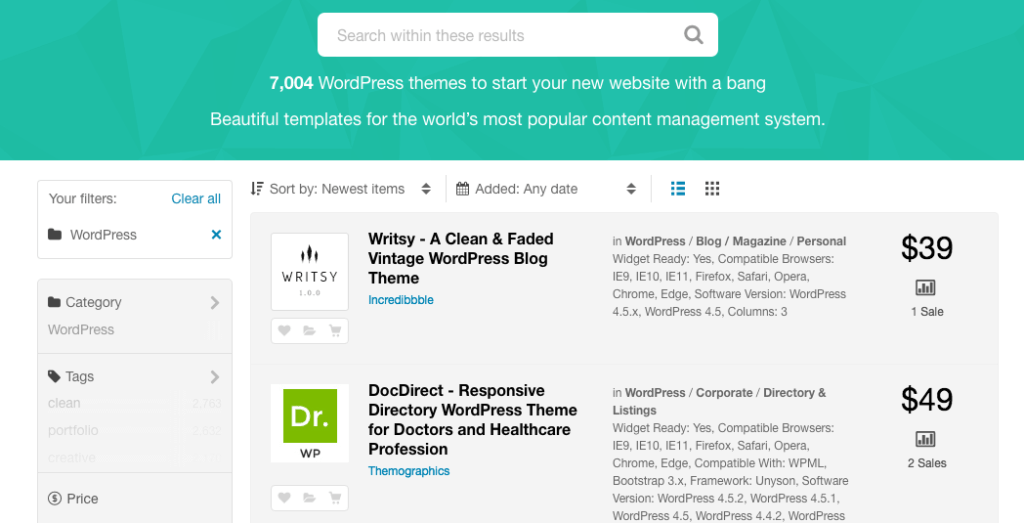 How to Select the Best WordPress Theme?
How to Select the Best WordPress Theme?
So, if you’re a newbie or don’t have that much time to invest and learn, then here is a comprehensive guide to help you select the best WordPress theme. Again, it is not that easy, but the information added here will help.
Let’s start with the basics first! You can ignore them if you already have a little bit of experience with the WordPress themes.
The basics
The very first thing to consider is to check the WordPress version compatibility. This is really necessary as if the compatibility isn’t matched then there is no guarantee that the complete set of features and functions of the selected theme will work.
The second thing to check is the developer’s profile behind that particular theme. No matter how cool or impressive a theme looks, the developer’s profile needs to be checked thoroughly. There are plenty of shiny themes available which does look impressive to a newbie but they are kind of a trap.
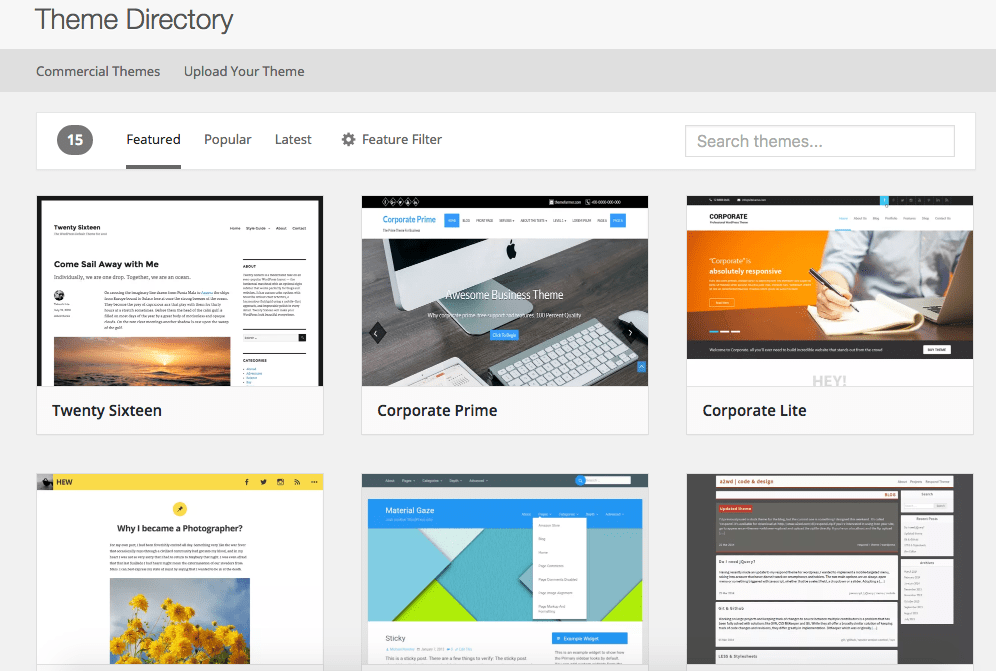 The developers with not-so-good intentions are usually publishing themes which are trapped with malware of infected files. It might not affect the health of the website in starting, but it can in future.
The developers with not-so-good intentions are usually publishing themes which are trapped with malware of infected files. It might not affect the health of the website in starting, but it can in future.
The third thing to consider is the size of the theme. If it is too heavy then it will not help the overall website to achieve a better performance, which is a must as nowadays, the speed of a website is considered as a ranking factor.
On the other hand, if it is too light, then it might not have the modern features the internet users are liking these days. So, you need to select a theme which after installing, keeps the overall page load time below 3 seconds. However, the best practice is to achieve a 2 second (or less) page load time.
These are the basics! But, these are not all! Let’s jump into the advanced section.
The advanced
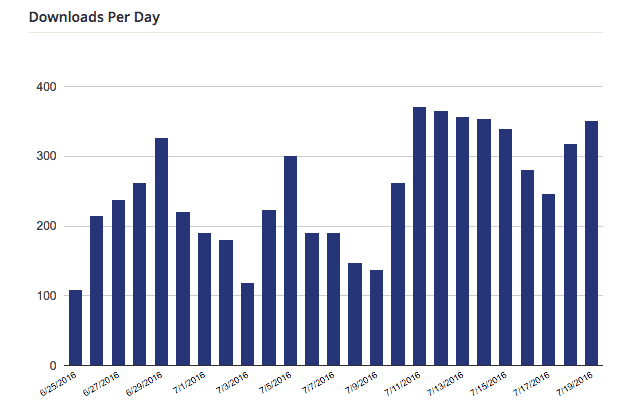 There are two open ways to inject a code into a WordPress installation. A theme and a plugin! As we’re talking about the themes here, it is important that you learn and be aware of the advanced parts.
There are two open ways to inject a code into a WordPress installation. A theme and a plugin! As we’re talking about the themes here, it is important that you learn and be aware of the advanced parts.
#1 Check theme’s code
There are plenty of web services available which checks a theme’s code and inform you if it is totally safe or not. The developers are also keen to include these validators in the description but you can still cross-check their authenticity. This activity will not only help you filter an authentic theme but will also help you know the ones which are infected with malicious code.
#2 Check out the reviews
In the age of the internet, no product is safe from reviews and ratings. The same applies to WordPress themes and you can easily google for a particular theme’s review. A handful number of results will be available. Now, not every review is worth reading considering the fact that it might not be genuine, so, you need to check a good number of them.
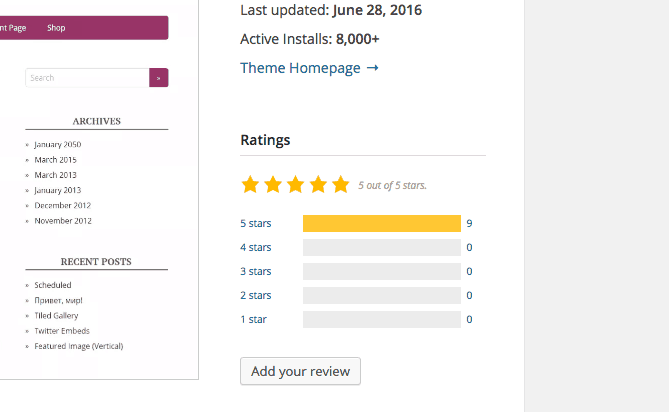 When you read a genuine review, you’ll come to know for sure, and that will help out in knowing the theme before even using it. Social platforms and groups are also a quick source of finding genuine reviews.
When you read a genuine review, you’ll come to know for sure, and that will help out in knowing the theme before even using it. Social platforms and groups are also a quick source of finding genuine reviews.
#3 Check the support part
Other than all the features and functionalities, including other factors, the support part is really important. Taking you as a normal user, not a developer, a dedicated support from the developer of the theme is a must! It will help you find a solution whenever you’re trapped in a situation.
#4 Responsiveness is must
The web traffic from the smartphones has increased with the increase in the use of smartphones (including tablets). Day by day, smartphones are getting better and coming close to replacing our laptops and desktops, at least for normal usage.
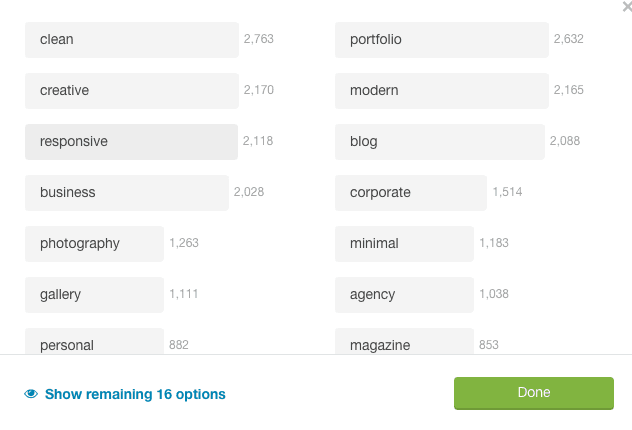 So, a desktop format of the website couldn’t help a smartphone user in the best possible way. Thus, the website’s design should sense a user from smartphone and then present itself in a compatible format. This mechanism of automatically adjusting the overall look and functionality of a theme for the smartphones is termed responsiveness and this feature should be part of the theme.
So, a desktop format of the website couldn’t help a smartphone user in the best possible way. Thus, the website’s design should sense a user from smartphone and then present itself in a compatible format. This mechanism of automatically adjusting the overall look and functionality of a theme for the smartphones is termed responsiveness and this feature should be part of the theme.
#5 Simplicity will always dominate
The design is the first thing people interact with and if it is not simple to understand, there is no use to make that website and putting it up online. If readers find it simple yet elegant, they will be happy to interact further and share it on their social platforms.
The power of simplicity will always dominate this space and thus, you need to check the demo of a theme thoroughly, before making the final decision or even considering it in the finalised ones.
#6 Compatibility
A theme isn’t the only thing which needs to be installed on a WordPress website in order to make it properly functional. Third-party plugins are also required and thus, a proper compatibility with all popular (at least) plugins is a must!
#7 SEO and Schema support
Search Engine Optimisation and Schema support are becoming must these days! The first one help a website rank on a better position at SERPs while the second one help a website get better CTR (Click Through Rate) from the SERP listings. So, both are important and if a theme is missing them, then it’s surely not a modern one.
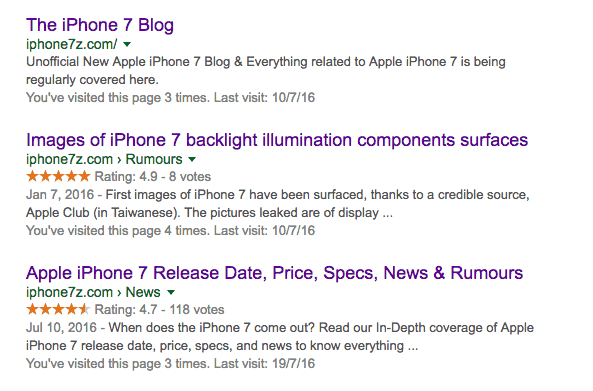 A dedicated support for both these features is a must and it should be mentioned in the description itself. Or you can ask the developer about it!
A dedicated support for both these features is a must and it should be mentioned in the description itself. Or you can ask the developer about it!
Wrap up
These will all add up and will help you to get a better WordPress theme. With the variety of options we’ve, the selection process isn’t going to be easy. If you need help in picking up a particular theme based on the set of requirements, then write them down in the discussion section below. I’ll share the theme names I’m aware of, matching those requirements. Good luck!



No Comments